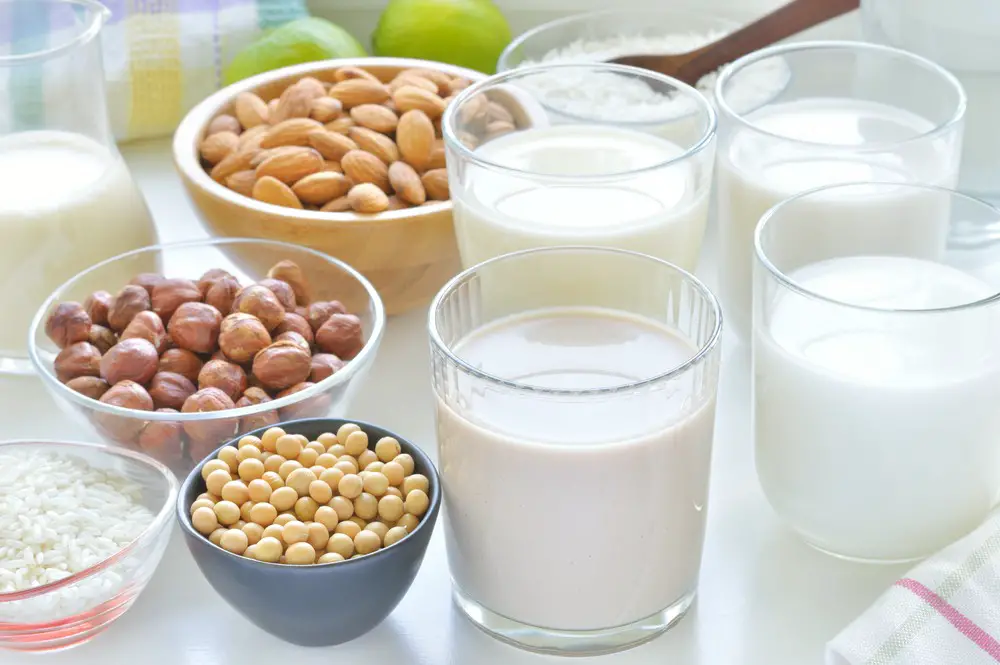Looking for creative ways to substitute dairy in your dishes without compromising on flavor? We’ve gathered seven ingenious tips from top professionals like CEOs and founders. From using cashew cream as a creamy substitute to pureeing white beans for a nutritious cream substitute, discover how these experts reinvent classic dishes with dairy-free alternatives.
- Cashew Cream: A Creamy Substitute
- Coconut Milk: A Sweet and Creamy Alternative
- Oat Milk Creamer: A Flavorful Coffee Addition
- Savory Sauces and Salsas: A Tangy Replacement
- Nutritional Yeast: A Cheesy Dairy Substitute
- Miso Paste: An Umami-Rich Alternative
- Pureed White Beans: A Nutritious Cream Substitute
 Cashew Cream: A Creamy Substitute
Cashew Cream: A Creamy Substitute
From my experiences, I’ve learned that cashew cream is a delicious way to replace dairy in classic recipes without changing the taste. For example, I mix soaked cashews with veggie broth, nutritional yeast, and a little lemon juice to make creamy pasta sauces. This clever mix perfectly imitates the creamy feel of dairy, which improves the taste.
The richness of the cashews gives the dish a pleasing level of depth. Using this substitution is not only better for your diet, but it also improves the general taste. When I reflect on my culinary adventures, this method has received positive feedback from dairy lovers and those who don’t consume dairy. This shows how creative ingredient swaps can improve standard recipes and meet the needs of people with different diets.
Matthew Appleton, E-Commerce Manager, Appleton Sweets
Coconut Milk: A Sweet and Creamy Alternative
Coconut milk, for me, is a great substitute for dairy in many dishes that call for milk or cream. It has that subtle sweetness similar to milk and roughly the same consistency, which means your dish will turn out the same.
Coconut milk adds more flavor than regular dairy milk, giving it more depth. I add it to my soups, baked goods, smoothies, and pasta sauces using a 1:1 ratio! And, if you end up with leftover coconut milk and can’t use it up, freeze it into cubes to add to your dishes later.
Drew Lever, Chief Marketing Officer, Ria Money Transfer
Oat Milk Creamer: A Flavorful Coffee Addition
I don’t regularly shy away from dairy, but I have tried to reduce my intake in certain ways. One way I’ve eliminated dairy is in my cups of coffee—I have a few each day.
I’ve started using oat milk coffee creamer instead of milk, which is delicious. It’s even better because of the different flavors available to you, including salted caramel, brown sugar, and more.
It might not seem like a major swap, but I drink multiple cups of coffee daily, and eliminating that milk intake has been nice. Bonus: The oat milk coffee creamer is delicious!
Brian Simoneau, Owner, Mass. RMV Lawyers
Savory Sauces and Salsas: A Tangy Replacement
One creative way to substitute dairy in a classic dish without losing flavor is to use savory sauces and salsas. An example would be replacing cream-based sauces in pasta dishes with a tangy tomatillo-avocado salsa.
In addition to adding texture, the tomatillos provide fruity acidity, and the avocado adds a richness that makes up for the absence of heavy cream. This substitution saves on fat and calories while retaining vibrant flavor; plus, it can make traditional pasta dishes like fettuccine Alfredo more exciting!
Michael Alexis, CEO, teambuilding.com
Nutritional Yeast: A Cheesy Dairy Substitute
A creative way to substitute dairy in a classic dish without losing flavor is using nutritional yeast. Nutritional yeast has a savory, cheesy taste that can be incorporated into various recipes.
For example, blend nutritional yeast with cashews, garlic, and seasonings in mac and cheese to create a creamy, vegan cheese sauce. This substitutes dairy without compromising flavor. Nutritional yeast can also be sprinkled on pasta or roasted vegetables to add a cheesy, umami taste.
Ben Lau, Founder, Featured SEO Company
Miso Paste: An Umami-Rich Alternative
Miso paste offers a unique and savory taste that can replace the richness of cheese in various recipes. Its umami flavor adds depth and richness to dishes like Caesar salad dressings or dips. For example, combine miso paste, lemon juice, olive oil, garlic, and Dijon mustard in a vegan Caesar salad dressing. The miso paste provides the creamy and cheesy undertones typically achieved with dairy-based dressings.
This substitution maintains the flavor and adds a distinct and delicious twist to the classic dish.
Roy Lau, Co-Founder, 28 Mortgage
Pureed White Beans: A Nutritious Cream Substitute
Incorporating pureed white beans into classic dishes can provide a creamy and smooth texture without compromising the flavor. This substitution works well in dairy-based sauces, soups, or creamy pasta dishes.
For example, to create a velvety texture, replace the heavy cream with pureed white beans in a creamy tomato soup. The beans add protein and fiber, enhancing the dish’s nutritional value. The mild flavor of the beans allows the other ingredients to shine while maintaining the richness and creaminess expected in a classic dish.
Yoana Wong, Co-Founder, Secret Florists
 The Cream of the Crop: Our Take on Dairy-Free Genius
The Cream of the Crop: Our Take on Dairy-Free Genius
When you dig into these dairy substitutes, what strikes you is the sheer ingenuity on display. Gone are the days when non-dairy meant bland or unappetizing. We’ve moved into an era where culinary creativity knows no bounds, dairy or no dairy.
For instance, cashew cream does more than mimic the texture of dairy—it brings an earthy richness that even traditional cream lacks. It’s a gastronomic leap, not a compromise.
Then there’s coconut milk, the ultimate twofer. Not only does it replace dairy in recipes, but it also imbues dishes with an exotic flair. It’s like taking a mini-vacation in your kitchen.
And let’s not overlook miso paste. This umami-packed ingredient can transform a dish. You’re not just skipping dairy; you’re elevating the culinary experience.
Each of these substitutes does more than fill a dairy-shaped hole. They bring their unique flavors and textures to the table, expanding our culinary horizons and making the world of dairy-free cooking an exciting playground for foodies.
Tips to Flip the Script on Dairy-Free Cooking
-
Quality Matters: Opt for high-quality substitutes to ensure the end product is as delicious as the original. For instance, extra-virgin coconut oil can offer a more refined taste than regular coconut oil.
-
Spice It Up: Sometimes, you miss the rich mouthfeel without dairy. You can recreate this sensation by adding spices like nutmeg or paprika to your cashew cream or oat milk sauce.
-
Texture Tricks: Consider the texture of your dairy substitute. A pureed cauliflower might serve as a stand-in for cream in soups, while silken tofu could be perfect for smoothies.
-
Plan Your Pantry: Stock up on a variety of dairy substitutes. Having options like almond milk, coconut cream, and nutritional yeast on hand gives you the flexibility to experiment.
-
Adjust Portions Gradually: When trying a new substitute, use it in smaller quantities and taste as you go. Some substitutes, like nutritional yeast, have strong flavors and can overwhelm a dish if used excessively.
-
Nutrition Nuance: While substituting, keep an eye on the nutritional content. Some dairy-free options might be high in fats or sugars, so balance your meal accordingly.
-
Test and Tweak: Your first attempt at dairy-free may not be a grand slam, and that’s okay! The joy of cooking comes from tweaking and perfecting over time.
Remember, going dairy-free doesn’t mean sacrificing flavor or texture. These tips serve as a toolkit to elevate your dairy-free dishes to something truly special. Happy cooking!

